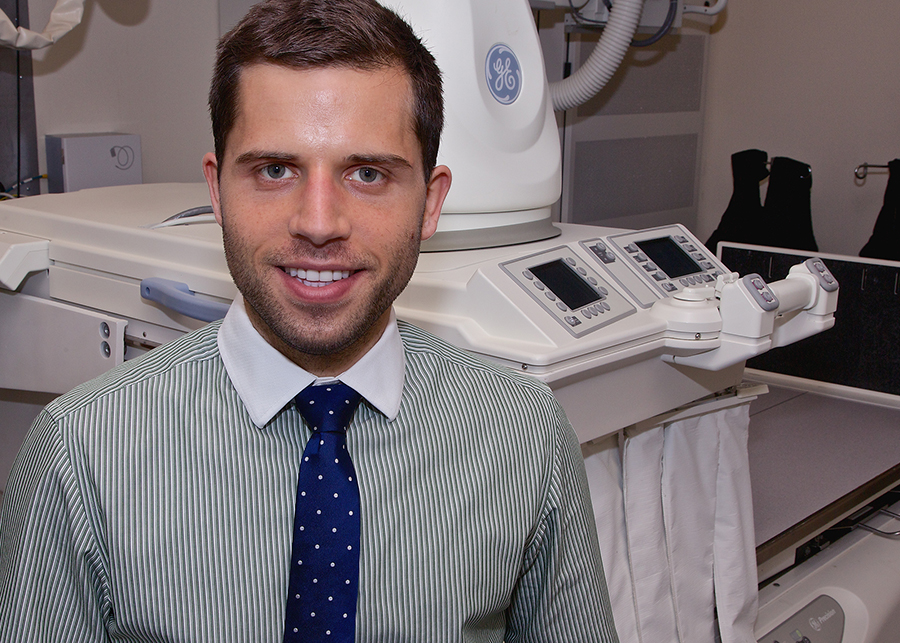Adopt-a-Resident Program Awardee Designs New Models for Resident Training
April 8, 2016

Adopt-a-Resident, Sean Z. Goodin, MD, R1, proposed to develop a new kind of anatomic model to be used in training: a dynamic 3D printed model.
That’s why Dr. Sean Z. Goodin, R1, proposed developing a new kind of anatomic model to be used in training: a dynamic 3D printed model. These models could easily and inexpensively be altered to simulate body conditions like high or low BMI, for example. They even could be produced with degenerative pathologies so residents could practice troubleshooting such difficulties. Using such models, Dr. Goodin argued, would better prepare residents to deliver high-quality care to real patients with imperfect physiques.
The idea is so good, the Department of Radiology and Imaging Sciences has selected Dr. Goodin as its 2016 Adopt-a-Resident Program grant recipient, or “adoptee.”
“This is exactly the kind of innovative thinking we seek to support with the Adopt-a-Resident Program,” says Dr. Carolyn Meltzer, William T. Timmie Professor and Chair of the Department of Radiology and Imaging Sciences. “We are committed to supporting our radiology residents like Dr. Goodin so they can undertake projects of their own design that help advance the quality of both radiology resident training and prepare them for their own career path.”
Since its inception in 2008, the Adopt-a-Resident Program has “adopted” thirteen radiology residents and twelve projects. A dozen faculty members have served as mentors, guiding—but not directing—the residents in project design and execution. One of Dr. Goodin’s mentors, Ryan Peterson, MD, was himself a resident adoptee in 2011.
“The idea started with Dr. Peterson,” Dr. Goodin says. “We had multiple meetings discussing what the project would entail and how it would be developed. He is a great mentor and I am very thankful to be able to work with him and Dr. Corey.”
Dr. Amanda Corey, assistant professor of Radiology and Imaging Sciences, is Dr. Goodin’s other mentor. The team is already at work pricing 3D printers that can print on plastics, rubber and other resins.
Like Dr. Goodin’s proposed 3D printed model project, half of Adopt-a-Resident projects employ technology in innovative ways. Projects also are evenly split between exploring innovations in teaching and training and advancing the quality of clinical practice. Some projects even focus on global health issues.
The adopted residents’ projects have yielded such exciting advances, groups of department members like the Division of Breast Imaging faculty have raised funds to support the program.
Dr. Mimi Newell, associate professor in the Department of Radiology and Imaging Sciences, says, “This unique program encourages residents to develop projects that aren’t classic research. They are asking questions and innovating around distinctive topics that improve our profession and the care of our patients. Our department supported Dr. Nnenna Agoucha (2010 adoptee), who brought portable ultrasound to remote areas of Nigeria. We also supported Dr. John Chenevey (2009 adoptee), who worked on forwarding issues surrounding radiology in the legislative sphere, both statewide and nationally, which benefits our patients. Dr. Goodin’s project is really interesting to me because it may allow residents (or even caregivers in underserved parts of the world) to gain experience in ultrasound-guided breast biopsies before ever seeing an actual patient. The Adopt-a-Resident Program invites and encourages these projects, which likely would lie fallow otherwise.”



